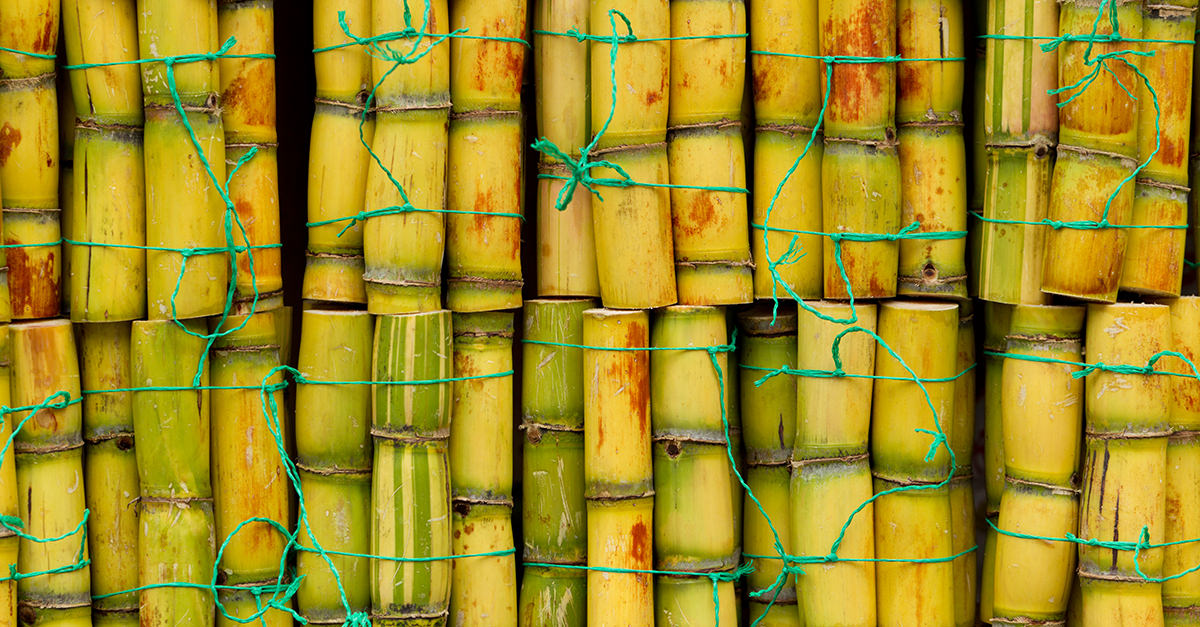- Color: Clear, light amber, Dark amber
- Region: Rum can legally be distilled anywhere in the world, but it’s most commonly associated with places like Trinidad, Jamaica, Cuba, Guyana, Barbados, Mexico, etc.
- ABV: 40% ABV minimum
- Aging: Many, but not all, rums are aged
- Commercial Examples: Ron Zacapa, Appleton, Foursquare, Bacardi, Barbancourt, Brugal, Mount Gay
- Popular Cocktails: Piña Colada, Daiquiri, Planter’s Punch, Dark ‘N Stormy, Mai Tai, Cuba Libre
There’s a reason rum seems like something you should be sipping beachside, with or without a large-brimmed straw hat. While it can technically be made anywhere, rum’s historically tropical, an island product brimming with history, warmth, spice, and the sweetness of that most beloved, controversial crop: sugar cane.
All rum is the product of sugar cane, which is why rum—all rum—has some character that may seem like “sweetness” (without necessarily being sweet). Whatever rum is being produced, it starts with cane—pressed to remove excess water and either fermented immediately (to make rhum agricole), or boiled to create a molasses byproduct, from which most types of rum are made.
Of course, this being the wide, wide world of spirits, that’s not the end of the story. Rum, like many spirits, can benefit from aging (even so-called “white rum” can be briefly aged, and then charcoal-filtered for clarity). Depending on whether a rum’s been pot-distilled (e.g. Jamaica, Barbados) or column-distilled (Cuba), you’ll want to age it more or less aggressively. And when rum is aged (which it often is), it’s aged briefly, often in previously used wooden casks, for one reason: climate. Rum is made in warmer climates, meaning any reaction between spirit and barrel is going to happen more rapidly (including evaporation of that precious Angel’s Share). A charred, previously used bourbon barrel, e.g., ensures that the rum won’t leach too much out of (or into) the barrel, while still getting some of that precious vanillin (not to mention spice from eugenol and lactones for tropical notes, etc.).
And that’s where the rainbow of rum flavors comes together, with spice, tropical fruit, vanilla and caramel swirling around in darker rums, and lighter rums showing cleaner, but still tropical fruit, softness, and spice (that sugar cane juice-derived rhum agricole tends to have a pleasantly grassier flavor). Yeast can also impact flavor (Bacardi, known for its ultra light rums, breeds yeasts that ferment molasses even faster, resulting in fewer congeners and esters and an even lighter rum). While rum doesn’t tend to get as much play (because it’s not aged as long, and age tends to lend spirits more cachet), it’s gaining in popularity, for good reason. Here are a few key types to get you started (the ticket to a beachy island paradise is on you):
- White Rum: As per name, clear, lighter bodied, though often aged very briefly and filtered
- Gold Rum: Slightly more complex than white rums due to aging in oak barrels, still good for cocktails as they’re not yet extremely complex
- Dark Rum: Aged for longer periods of time, with darker, fuller flavor profiles, good for sipping solo
- Demerera Rum: While many rums are made from sugar cane grown in Brazil, Demerera is made from cane grown in Guyana, with long aging and a rich, dark flavor profile similar to Jamaican rum; distilled using old stills, thought to be indicative of how rum used to taste
- Spiced Rum: A distilled rum that’s been flavored with spices, usually upping the impression of spice often gotten from barrel-aging.
- Rhum Agricole: Made with sugar cane juice instead of molasses, so terroir (i.e. where the sugar cane was grown) is an important factor; can be white, gold, dark, etc., with flavors that incorporate vegetal notes into the complex rum backdrop
- Naval/Overproof: Refers to any rum that’s higher alcohol (50 to 60% and above)
